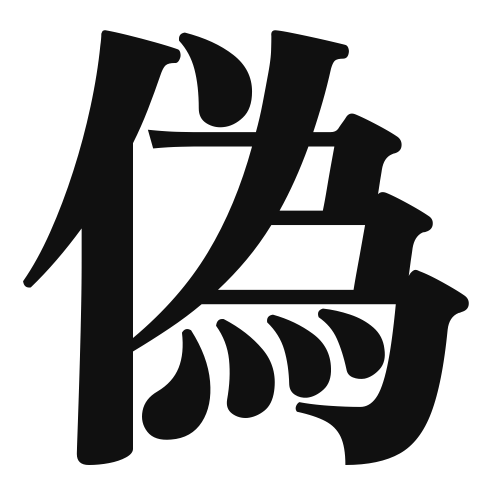1. Overview of Meaning
The kanji “偽” (pronounced “gi” in Japanese) means “false” or “fake.” It is used to describe something that is not genuine or is a deception.
2. Formation and Radical
Formation of the Kanji: The kanji “偽” is a compound character (会意文字) that combines elements to convey its meaning. It consists of the radical for “person” (亻) on the left, indicating that it relates to human actions, and the character “偽” on the right, which suggests falseness or deception.
Radical: The radical of “偽” is 亻, which is a variant of the radical for “person” (人). This radical often appears in kanji related to human behavior or actions.
3. Examples of Usage
Common Words and Phrases: Some frequently used words that include “偽” are:
- 偽者 (にせもの, nisemono) – “imposter” or “fake person”
- 偽情報 (ぎじょうほう, gijouhou) – “false information”
Example Sentences in Daily Conversation:
- 彼は偽者だと気づいた。 (かれはにせものだときづいた。) – “I realized he was an imposter.”
- そのニュースは偽情報だ。 (そのにゅーすはぎじょうほうだ。) – “That news is false information.”
4. Synonyms and Antonyms
Similar Kanji: A similar kanji is “虚” (きょ, kyo), which means “empty” or “false” but often refers to something that lacks substance or reality, while “偽” specifically denotes something that is intentionally deceptive.
Antonyms: The antonym of “偽” is “真” (しん, shin), which means “true” or “genuine.” This kanji represents authenticity and reality.
5. Cultural and Historical Background
Relation to Japanese Culture: The concept of “偽” is significant in Japanese culture, where authenticity and honesty are highly valued. The idea of deception is often explored in literature and art.
Proverbs and Idioms: One common saying is “偽りのない心” (いつわりのないこころ, itsuwari no nai kokoro), which means “a heart without deceit,” emphasizing the importance of sincerity.
